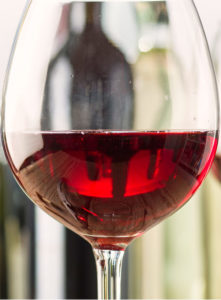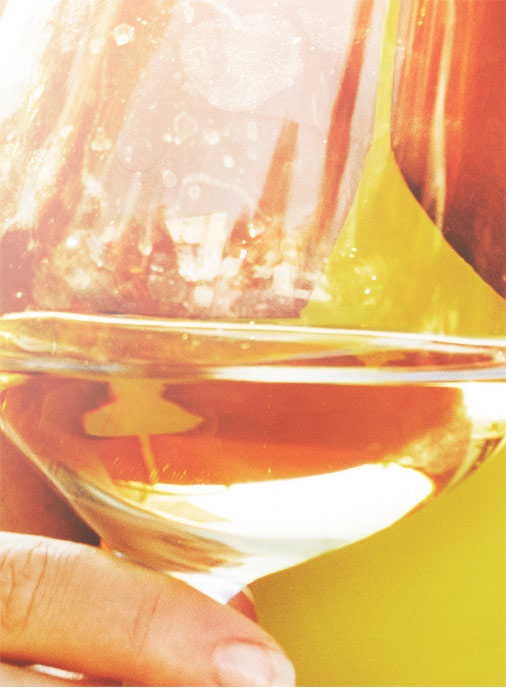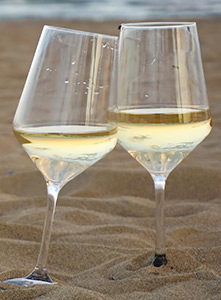
Rules? We don’t need no stinkin’ rules…
Well, the truth be told. Rules are important. However many are subject to interpretation particularly Wine Rules. Sure, the experts recommend red wine with red meat and white wine with seafood as does Vastewine but when you are the ultimate decision maker experiment, be bold, take a risk, be adventurous…step outside the proverbial box and try new wines with your favorite foods. When you are ready to purchase some wine, check out the Vastewine Top Lists and pick an assortment of these wines and have your own “getting to know new grapes” tasting party. Have some various hors d’oeuvres from several different food groups and see how the diverse wines impact the taste combinations. The most important rule when it comes to drinking wine is to drink what you enjoy.
That being said, there are some guidelines to consider. The body category (light, medium, full) of a wine is based on the alcohol content. For the sake of simplicity, let’s assume that light body wines have 12.5 or less percent alcohol, medium is 12.5 to 13.5 % and full is anything over 13.5 %. Knowing the alcohol content (usually found on the back label) will assist in choosing which foods to pair with which wine. The following chart should help.
Red Wines
Light Body
White Wines
Full Body

Code Name: Cab Driver
File Name: Pierre De’Savvy
Primary Food Specialty: Ribeye steak or anything that used to be cute…Seriously you think chrimp are cute?
Special Skills: Making people tolerable at holiday parties
Birthplace: Bordeaux, France. California.
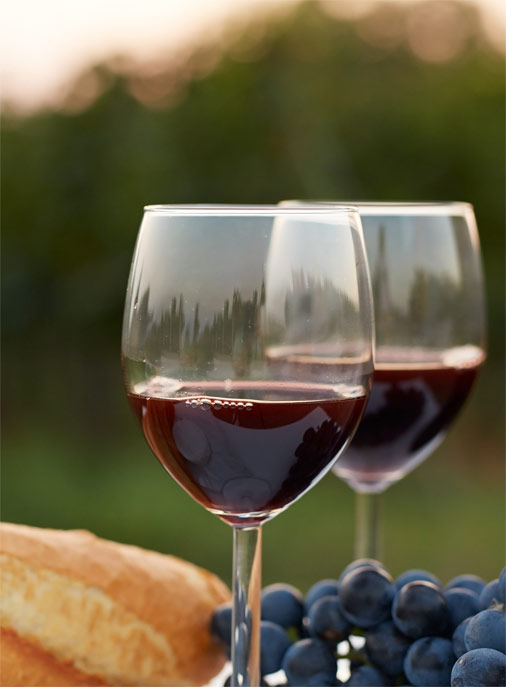 Cabernet Sauvignon, aka Cab Driver, is grown in different climates around the globe. Cab is a full-bodied red wine with dark fruit flavors. Cab is a very complex wine with higher tannins, pairing it well with Steak, Pizza, Burgers, and ribs. Although grown in various climates worldwide, the 2 most prominent regions are the Old World Bordeaux, which has a more herbal, earthy taste, and the New World California region, boasting a fruitier complex of flavors. U.S. made Cabernet’s can contain up to 25% of other grapes due to laws. Often times higher in price, Cabernet Sauvignon will not disappoint. It’s typically a dryer red wine and not very sweet but with a very smooth finish.
Cabernet Sauvignon, aka Cab Driver, is grown in different climates around the globe. Cab is a full-bodied red wine with dark fruit flavors. Cab is a very complex wine with higher tannins, pairing it well with Steak, Pizza, Burgers, and ribs. Although grown in various climates worldwide, the 2 most prominent regions are the Old World Bordeaux, which has a more herbal, earthy taste, and the New World California region, boasting a fruitier complex of flavors. U.S. made Cabernet’s can contain up to 25% of other grapes due to laws. Often times higher in price, Cabernet Sauvignon will not disappoint. It’s typically a dryer red wine and not very sweet but with a very smooth finish.
“Cab Driver will punch you in the mouth with its high alcohol content, leaving you begging to be hit with its black cherried leather bag fists over and over again.”

Code Name: Blackbird
File Name: Le’ Merle Haglot
Primary Food Specialty: Any meat lamb and veal in particular
Secondary Food Specialty: cheese and desserts
Special Skills: The perfect wine when you’re going for…brooding
Birthplace: Bordeaux, France
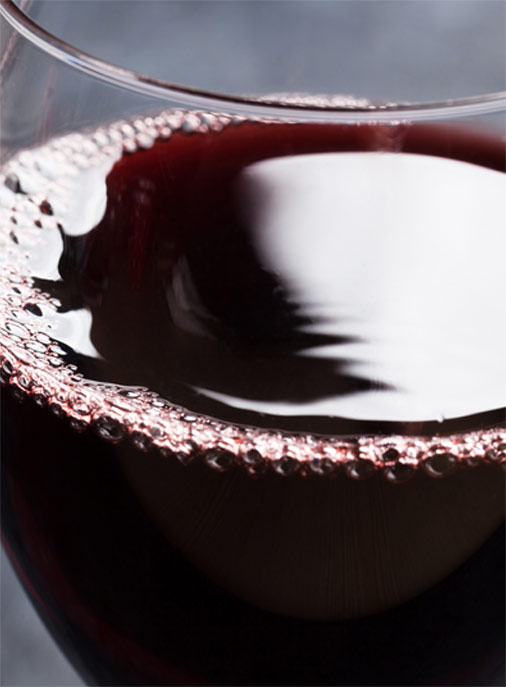 Merlot, the most popular wine grape planted in France, has been a widely sought after wine since its discovery in 1784. Merle, translated as “Blackbird” in French, gets its name from dark the wine’s dark blue color. Popular worldwide, Merlot is successfully grown in France, Italy, California, Australia, Chile and Argentina. Merlot will typically have higher sugar levels and alcohol and be sweeter than its arch nemesis, Cabernet Sauvignon. The acidity of a Merlot will be lower, however. Characteristics of Merlot will include chocolate, plum, black cherry, blueberry, raspberry, and licorice. For most Merlot’s, freshness of the fruit is a priority, making it one of the tastiest wines on the planet!
Merlot, the most popular wine grape planted in France, has been a widely sought after wine since its discovery in 1784. Merle, translated as “Blackbird” in French, gets its name from dark the wine’s dark blue color. Popular worldwide, Merlot is successfully grown in France, Italy, California, Australia, Chile and Argentina. Merlot will typically have higher sugar levels and alcohol and be sweeter than its arch nemesis, Cabernet Sauvignon. The acidity of a Merlot will be lower, however. Characteristics of Merlot will include chocolate, plum, black cherry, blueberry, raspberry, and licorice. For most Merlot’s, freshness of the fruit is a priority, making it one of the tastiest wines on the planet!
“Blackbird has the skills to soar over all the other wines when at its peak, making your palate scream for more.”

Code Name: Chardalicious
File Name: Kim Chardashian
Primary Food Specialty: Seafood
Secondary Food Specialty: Whatever people eat at brunch
Special Skills: Making Brenda from HR frantically erase an Instagram post
Birthplace: Bordeaux, France. California.
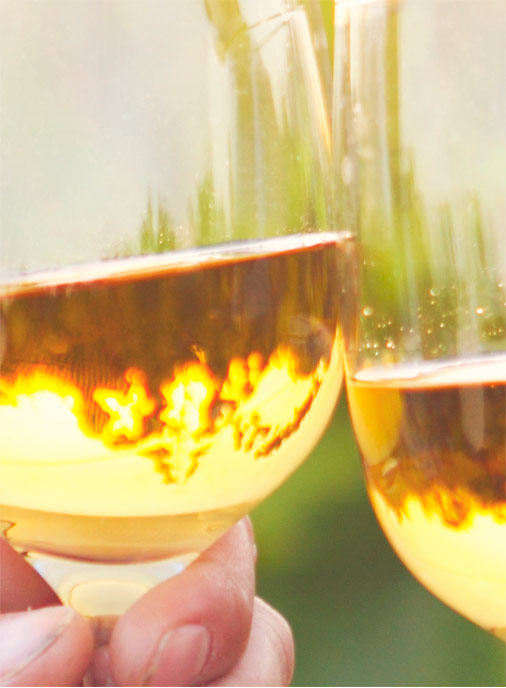 Chardonnay, the most popular white wine grape in the world, hails from the wonderful region of Burgandy, France. There is not a wine region in the world where you won’t find Chardonnay being made. With that being said, the variety of aromas and tastes you will find from each region will vary widely depending on the climate. In cooler climates, bottles of Chardonnay will deliver apple, pear, and other citrus fruit flavors, with a wonderful bite of acidity. In moderate climates, the fruits will dull a bit and have medium acidity. In the warmer regions, you will find more tropical tastes like pineapple and banana, also with a medium acidic finish. There are also 2 major divisions when it comes to Chardonnay….those who love the buttery, oak barreled and those who enjoy the more old world style of “unoaked” Chardonnay.
Chardonnay, the most popular white wine grape in the world, hails from the wonderful region of Burgandy, France. There is not a wine region in the world where you won’t find Chardonnay being made. With that being said, the variety of aromas and tastes you will find from each region will vary widely depending on the climate. In cooler climates, bottles of Chardonnay will deliver apple, pear, and other citrus fruit flavors, with a wonderful bite of acidity. In moderate climates, the fruits will dull a bit and have medium acidity. In the warmer regions, you will find more tropical tastes like pineapple and banana, also with a medium acidic finish. There are also 2 major divisions when it comes to Chardonnay….those who love the buttery, oak barreled and those who enjoy the more old world style of “unoaked” Chardonnay.
“Chardalicious will grab that cheese tray by the throat, toss it around.”

Code Name:Sho Sho Schweet
File Name: Gunter Sweet
Primary Food Specialty: Chicken, Pork, Ham
Secondary Food Specialty: Dark Chocolate or anything bitter
Special Skills: Can sometimes be used to knock out the Kool Aid Man!
Birthplace: Germany
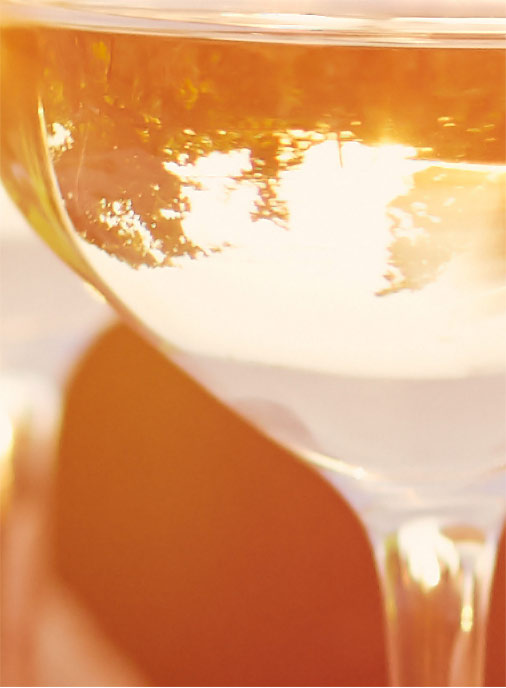 Riesling, one of the great white wines around the world, originated in the Rhine region of Germany. This very aromatic grape displays flowery, perfumed aromas and high acidity. Depending on the region, Riesling can be dry, sweet, or semi-sweet. The primary regions that Riesling strives in are Germany, Alsace, and the United States. The dry versions of Riesling will exhibit tastes of green apple, citrus and peach. The sweeter versions can be quite unique, oftentimes producing flavors of tropical fruit, honey, and spice. Many regions make special Riesling dessert wines with grapes that dry on the vine. Riesling is a wonderful white wine that should be served cold, and has a vast array of uses when paired with food.
Riesling, one of the great white wines around the world, originated in the Rhine region of Germany. This very aromatic grape displays flowery, perfumed aromas and high acidity. Depending on the region, Riesling can be dry, sweet, or semi-sweet. The primary regions that Riesling strives in are Germany, Alsace, and the United States. The dry versions of Riesling will exhibit tastes of green apple, citrus and peach. The sweeter versions can be quite unique, oftentimes producing flavors of tropical fruit, honey, and spice. Many regions make special Riesling dessert wines with grapes that dry on the vine. Riesling is a wonderful white wine that should be served cold, and has a vast array of uses when paired with food.
“The Rhine Slinger will lure you in with perfume and flowers, then bite you in the tongue with its acidic punch.”

Code Name: Captain Everybody
File Name:Franc CabZinMerMal
Primary Food Specialty: Varies depending on blend
Special Skills: Yeah, it still varies
Birthplace: Earth.
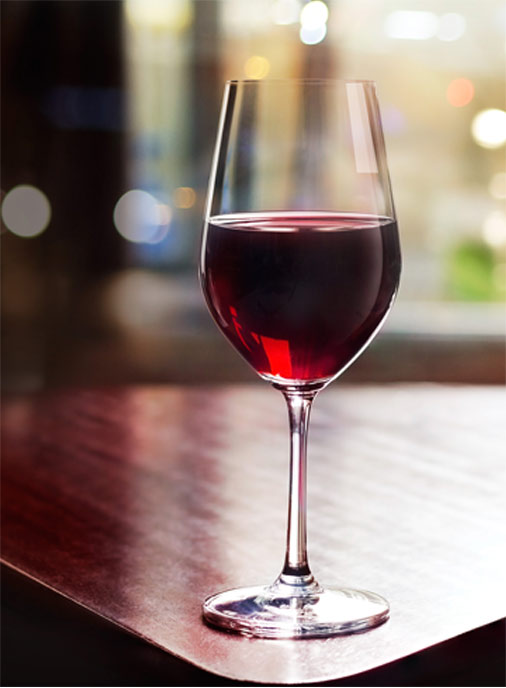
You’re expecting me to just type “It’s a red wine. And it’s blended.” Well, yeah…pretty much. Red Blends are actually more complex than that, however. Depending on the region, most red blends will start with a base grape, such as Merlot or Zinfandel. Other varietals will then be added to the wine for taste, acidity, and complexity. Depending on the mix, the aromas and tastes can be very deep and rich. When looking at different red blends, focus on the primary grape varietals that you already like. If you are a Cabernet Sauvignon fan, for example, try to find a blend that is based with Cabernet. Most red blends with match well with a variety of meats, so you can’t really go wrong there.
“Captain Everybody is a strong, burly wine that likes to bring his friends to the palate brawl.”

Code Name: Tastee Mcsweetness
File Name: John Malbecovich
Primary Food Specialty: Pork, Poultry
Secondary Food Specialty: …Fair Food…
Special Skills: The ability to taste very close to what you imagine wine to taste like when you’re a child but not taste like Kool-aid
Birthplace: France and Argentina
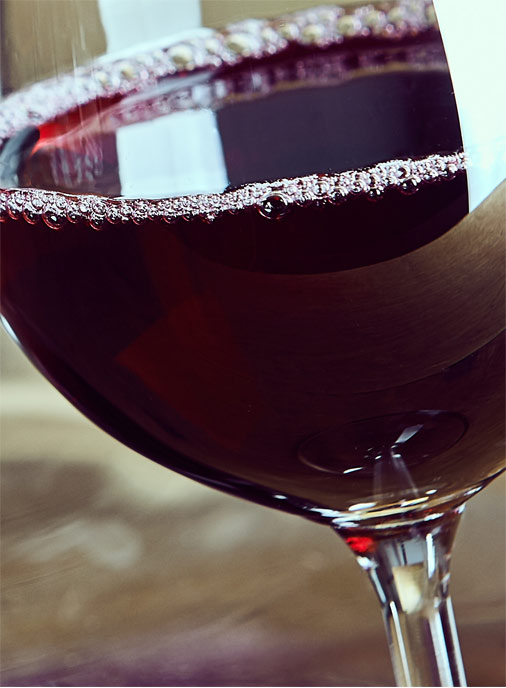
Malbec is as purple as the Pie Man and equally as sweet as Shortcake …but not in a cheesy way although it does pair amazingly with literally any cheese that doesn’t smell like a hobos sock. This rich, luscious wine has notes of plum and ample tannins. It’s deep color and full body might make you think it would be a bit dry but instead Malbecs are rich, dark and juicy. A little on the sweet side but usually with a very complicated finish. Although they are primarily brought to life in France and Argentina they pair amazingly well with American junk food. Usually when you say “What pairs well with a cheeseburger?” the joke is ….Bud Light but a Malbec is also an absolutely perfect pairing with food that you will probably regret eating but will never regret a good Malbec.
“John Malbecovich just makes everything a little quirky and a little better…even a chili dog.”

Code Name: Wild Thing
File Name: Gwyneth Paltrow
Primary Food Specialty:The Whitest Fish Possible…like the fish with a beard and Ipad in a starbucks
Secondary Food Specialty: Oysters and veggies
Special Skills: In 1/2 a glass or less a selfie will be taken.
Birthplace: Bordeaux, France. California.
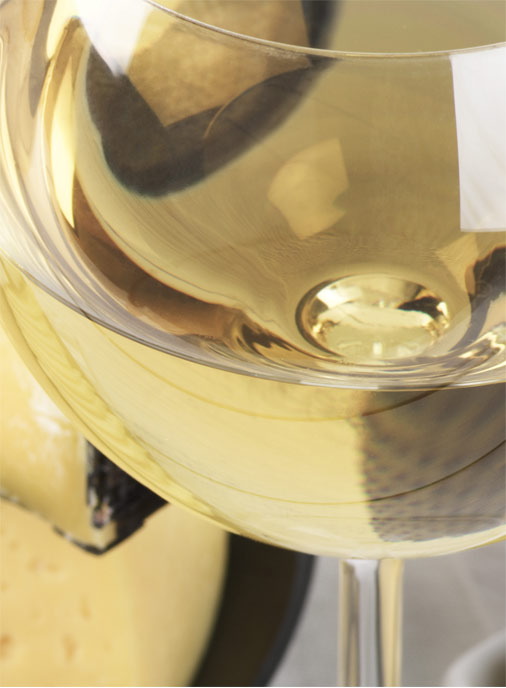
Sauvignon Blanc is a wonderful green-skinned grape from Bordeaux France. It’s a very crisp and fresh wine that works perfectly with cheese or seafood. It gets it’s name Wild Thing by the French words Sauvage (“Wild”) and blanc meaning “can’t dance”. This wine is usually consumed young because aging really doesn’t improve the flavor. You can also find many Sauvignon Blanc’s bottled with a screwcap rather than a cork. This is because Sauvignon Blanc aka Wild Thing doesn’t need to be told what to do…and doesn’t like it. Unless you’re saying GO TO BRUNCH! Sauvignon Blanc loves to go to brunch or sushi night.
“Wild Thing….I think I love you but I want… another clean plate for some fruit at brunch.”

Code Name: Gris Lightning
File Name: Gregario Pinato
Primary Food Specialty: Seafood
Secondary Food Specialty: Pasta
Special Skills: Tasting fancy yet being available in a quickie mart.
Birthplace: Northeastern Italy
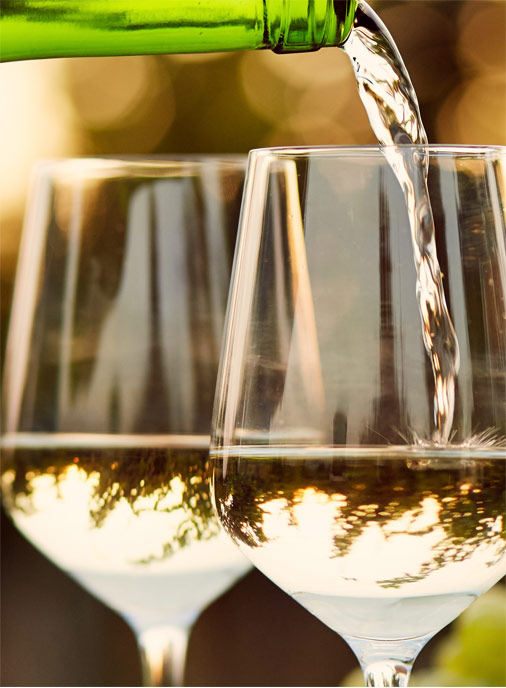 Pinot Grigio, also known as Pinot Gris, is a worldwide leader in the white wine industry. Famous for its zesty acidity and clean citrus flavors, Pinot Grigio pairs amazingly with most seafood and pastas. Primarily your palate will be overwhelmed with tastes of lime, green apples, lemons, pears, and nectarines. Depending on where the grapes are grown, aromas of honeysuckle and fresh honey will please your senses. For Italian versions, the wine will be totally dry with high acidity. The French counterparts will have a refreshing bite of honey. The American Pinot Grigio’s will have more powerful fruit flavors with less acidity. Ultimately, Pinot Grigio with its 3 different styles can make a tasting party very interesting!
Pinot Grigio, also known as Pinot Gris, is a worldwide leader in the white wine industry. Famous for its zesty acidity and clean citrus flavors, Pinot Grigio pairs amazingly with most seafood and pastas. Primarily your palate will be overwhelmed with tastes of lime, green apples, lemons, pears, and nectarines. Depending on where the grapes are grown, aromas of honeysuckle and fresh honey will please your senses. For Italian versions, the wine will be totally dry with high acidity. The French counterparts will have a refreshing bite of honey. The American Pinot Grigio’s will have more powerful fruit flavors with less acidity. Ultimately, Pinot Grigio with its 3 different styles can make a tasting party very interesting!
“Gris Lightning hits your palate so fast with its high acidity, you won’t actually know what hit you….but you will definitely beg for more.”

Code Name: Little Sarah
File Name: Don’t Call Me Durif
Primary Food Specialty: Any beef or pork dish
Secondary Food Specialty: Tomato based pasta dishes, Pizza
Special Skills: Existential crisis
Birthplace: Australia, California, France, and Israel
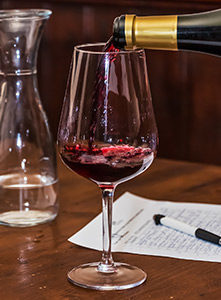 Durif or Petite Sirah is a variety of red grape. It’s a wonderful grape so wonderful that it needs 2 names apparently. Wines made out of Durif/Petite Sirah are very tannic wines with a spicy, plummy, fruit forward flavor.
Durif or Petite Sirah is a variety of red grape. It’s a wonderful grape so wonderful that it needs 2 names apparently. Wines made out of Durif/Petite Sirah are very tannic wines with a spicy, plummy, fruit forward flavor.
In the 1800’s a French botanist Francois Durif had grape plantings of both Peloursin and Syrah and at some point Marvin Gaye went back in time and the two vines cross pollinated and a new grape variety was born. So Durif being a very modest and humble man named it Durif. Then everyone else who didn’t like him said….lets call it Petite Sirah.

Code Name: Original Zin
File Name: Primitivo
Primary Food Specialty: Beef, Lamb or any strong meats
Secondary Food Specialty: Rich spicy sauces pastas, and pizzas
Special Skills: Kicking in the teeth of latent sugars
Birthplace: Croatia
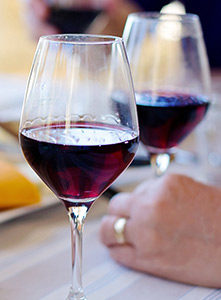 Zinfandel also known at Primitivo is a dark black-skinned grape. It’s like Edgar Allen Poe had a Taylor Swift coverband. Zinfandel grapes produce a robust red wine. The grape has a high sugar content which can translate into alchohol levels exceeding 15 percent. Despite the heavy sugar content Zinfandels typically would be considered as one of the most dry wines available.
Zinfandel also known at Primitivo is a dark black-skinned grape. It’s like Edgar Allen Poe had a Taylor Swift coverband. Zinfandel grapes produce a robust red wine. The grape has a high sugar content which can translate into alchohol levels exceeding 15 percent. Despite the heavy sugar content Zinfandels typically would be considered as one of the most dry wines available.
Red berry fruit flavors, blackberry, anise, and pepper notes make up this very complex wine.

Code Name: Chay What
File Name: Desperate Housewife
Primary Food Specialty: Any seafood dish, or chicken
Secondary Food Specialty: Tomato based pasta dishes, Pizza
Special Skills: Gunfighting in your mouth, Making it awkward when someone asks “what kind of dancing?”
Birthplace: Burgundy region of France
 Chablis is a an extremely dry white wine. It’s known for the purity of its aroma and flavor. It typically isn’t touched with oak because it’s vinified in stainless steel tanks. The amount of barrel maturation or complete lack thereof gives Chablis a distinctive steel flavor.
Chablis is a an extremely dry white wine. It’s known for the purity of its aroma and flavor. It typically isn’t touched with oak because it’s vinified in stainless steel tanks. The amount of barrel maturation or complete lack thereof gives Chablis a distinctive steel flavor.
Chablis has been called “goût de pierre à fusil” which means tasting of gunflint. It often pairs really well with strong seafood.

Code Name: X Blanc
File Name: Mutant White
Primary Food Specialty: Seafood and Chicken
Secondary Food Specialty: Cream sauce pastas
Special Skills: Lots of stories of Hannibal crossing the Rhyne.
Birthplace: France, and Catalonia, Northern Spain
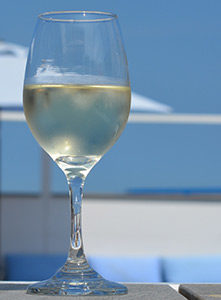 Grenache Blanc is rumored to have originated as a mutation of Grenache in Spain. Grenache Blanc is typically characterized by high alcohol and low acidity. Citrus and herb notes round out a very complex finish.
Grenache Blanc is rumored to have originated as a mutation of Grenache in Spain. Grenache Blanc is typically characterized by high alcohol and low acidity. Citrus and herb notes round out a very complex finish.
Grenache Blanc is a full-bodied white wine. It’s known for very intense flavors and high alcohol content. Most would compare it to Chardonnay.
The aromas have a strong note of citrus like unripe mango, lime zest, asian pear, and green apple. It also can be a little bit floral with notes of honesuckle.
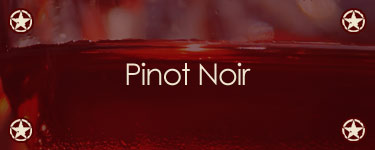
Code Name: Black Head Pietro
File Name: Not So Serious Black
Primary Food Specialty: Any beef or pork dish
Secondary Food Specialty: Tomato based pasta dishes, Pizza
Special Skills: Tasting like Marvin Gaye sounds
Birthplace: Australia, United States, Germany, United Kingdon, France, and …ok…just about everywhere
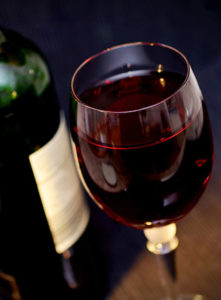
Pinot Noir is a red wine grape variety. The name comes from the French words pine and black because the grape has tightly clustered pine cone shaped bunches of fruit.
PInot Noir wines tend to have rich aromas of cherries, raspberries and strawberries. The thin skins and low levels of phenotic compounds create a lightly colored, medium bodied and low tannin wine.

Code Name: Smuckers
File Name: Vinho do Porto
Primary Food Specialty: Dessert
Secondary Food Specialty: Stanky Cheese
Special Skills: Making anything seem thin by comparison
Birthplace: Portuquese but also Australia, France, South Africa, Canada, India, Argentina, and the United States.
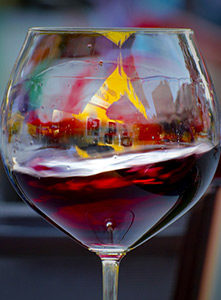 Port is a a fortified wine produced with distilled grape spirits typically from Portugal. It is typically a very sweet, red wine, usually served as a dessert wine. It can be very dry but typically it’s a little more on the sweet fruit forward side and very full bodied.
Port is a a fortified wine produced with distilled grape spirits typically from Portugal. It is typically a very sweet, red wine, usually served as a dessert wine. It can be very dry but typically it’s a little more on the sweet fruit forward side and very full bodied.
Port isn’t as much a grape as a treatment. Port is typically richer, sweeter, heavier, and higher in alcohol than unfortified wines. This is because of the addition of distilled grapes spirits to fortify the wine and halt fermentation before all the sugar is converted to about 19% to 20% alcohol.

Code Name: Gross Point Blanc
File Name: Wiener Burgunder
Primary Food Specialty: Fancy -just fancy
Secondary Food Specialty: Cream based pasta
Special Skills: Invisibility
Birthplace: Germany, Luxembourg, Italy, Hungary, and Czech Republic
Pinot Blanc is a white wine grape. You have to be careful with Pinot Blanc it’s unstable and might just lose it’s mess and mutate int a bear…..or a vine that bears all black fruit. Except for some of them that produce white fruit. So…you just don’t know because Pinot Blanc or otherwise known as Wiener Burgunder which loosely translates to …”Do you remember where I parked my car?”
Pinot Blanc often has fruity aromas, apple, citrus fruit, and floral characteristics. Sometimes they have stronger floral characteristics, fruits, and mineral undertones.

Code Name: The Grauburgunder
File Name: Vitis Vinifiera
Primary Food Specialty: Roast Chicken
Secondary Food Specialty: not quite roast chicken
Special Skills: Finding it’s way onto boats with wood trim
Birthplace: France
 Pinot Gris is a white wine grape many think is actually a mutant clone of Pinot Noir. That may make you think that this grape can read minds, or shoot laser beams, or make people tell the truth at brunch and you would be right. The grape itself normally has a blue fruit but they can also have a brownish pink to black appearance. The word pinot is usually given to grapes like this that grow in a small pine cone-shaped clusters.
Pinot Gris is a white wine grape many think is actually a mutant clone of Pinot Noir. That may make you think that this grape can read minds, or shoot laser beams, or make people tell the truth at brunch and you would be right. The grape itself normally has a blue fruit but they can also have a brownish pink to black appearance. The word pinot is usually given to grapes like this that grow in a small pine cone-shaped clusters.
Pinot gris flavors can range from ripe tropical fruits like melon and mango.

Code Name: Rosé Hey Ofunnel
File Name: Pinky and duhbrain
Primary Food Specialty: Seafood and light pasta
Secondary Food Specialty: Lamb
Special Skills: adding extra r’s to…”go gurrrrrl!”
Birthplace: …The Garden of Eden?
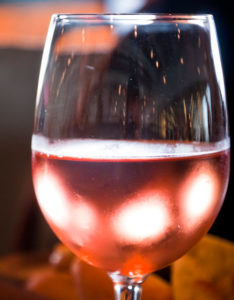 Rosé is isn’t really a grape as much as it is a grape treatment. It is possibly the oldest known type of wine because it is the most straightforward to make with the skin contact method adding color to the wine. The pink color can range greatly depending on how the wine was made. Just because they are pink you can’t assume they will be sweet. Rosé wines vary greatly from extremely dry to sweeter than riesling. Rosé wines can be made from almost any grape and are found all over the world. Rosé is made when black skinned grapes are crushed and the skins are allowed to remain in contact with the juice for a short period of time usually less than a day. This imparts a pink color and the longer the skins are left in the more intense the flavor and dark the color.
Rosé is isn’t really a grape as much as it is a grape treatment. It is possibly the oldest known type of wine because it is the most straightforward to make with the skin contact method adding color to the wine. The pink color can range greatly depending on how the wine was made. Just because they are pink you can’t assume they will be sweet. Rosé wines vary greatly from extremely dry to sweeter than riesling. Rosé wines can be made from almost any grape and are found all over the world. Rosé is made when black skinned grapes are crushed and the skins are allowed to remain in contact with the juice for a short period of time usually less than a day. This imparts a pink color and the longer the skins are left in the more intense the flavor and dark the color.
Some will try and fake a rosé by mixing red wine into white wine…these people don’t get freaked out by the McRib and shouldn’t be trusted with wine.

Code Name:
Mysterious Syrah
File Name: Shazam
Primary Food Specialty: Roast Beef
Secondary Food Specialty: Beefy stews, heavily spiced and rich dishes
Special Skills: Being confused when someone asks it’s name
Birthplace: France
 also known as Syrah, it’s a dark skinned grape prevalent world wide. Usually medium to full bodied the climate of where the grape comes from can heavily influence the taste of the wine. It can vary from high levels of tannins with notes of blackberry, mint, and black pepper to softer tannined with notes of fruit, spice, anise, and licorice.
also known as Syrah, it’s a dark skinned grape prevalent world wide. Usually medium to full bodied the climate of where the grape comes from can heavily influence the taste of the wine. It can vary from high levels of tannins with notes of blackberry, mint, and black pepper to softer tannined with notes of fruit, spice, anise, and licorice.
Shiraz has been widely used as a blending grape in popular red blends. It is thought best to age for decades but less aged wines tend to have very lively red and blueberry characteristics.
Aroma characteristics tend to be heavy with deep dark berries, black pepper, chocolate, and even hints of coffee.
Shiraz is a delicious confused enigma…so don’t ask it questions just pour it.

Code Name: Traminer Sweet
File Name: Spice Girl
Primary Food Specialty: Asian and Middle Eastern Cuisine
Secondary Food Specialty: Fatty Wild Game
Special Skills: Sweet and Low
Birthplace: Germany
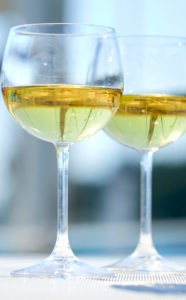 The first thing that hits the nose when you taste this wine is lychee which is something like a sweet rose. Sometimes it also has complex aromatics including grapefruit, rose petal, ginger and a smoky aroma like incense. it will have an inherently sweet flavor simply due to the smell. Generally, Gewürztraminer has an extremely low residual sugar (RS).Because of the heightened aromatics, so although it’s typically quite dry because of this it can seem very sweet.
The first thing that hits the nose when you taste this wine is lychee which is something like a sweet rose. Sometimes it also has complex aromatics including grapefruit, rose petal, ginger and a smoky aroma like incense. it will have an inherently sweet flavor simply due to the smell. Generally, Gewürztraminer has an extremely low residual sugar (RS).Because of the heightened aromatics, so although it’s typically quite dry because of this it can seem very sweet.
Gewürztraminer best pairings happen when you pair it with asian or middle eastern cuisine.
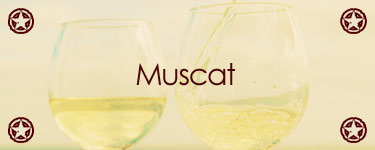
Code Name: Mus becandy
File Name: Almost Moscato
Primary Food Specialty: Spicy Food
Secondary Food Specialty: chocolate and soft cheese
Special Skills: Adding extra R’s in “Go Girrrrl”
Birthplace: Italy
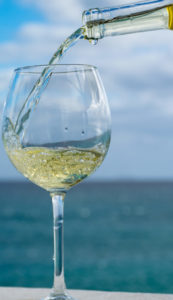 This italian grape can take on a pink or dark red, even brown color. The berries are quite small, which is where the strain of Muscat takes its name from. Also known as Moscato. Muscat is one of the oldest wine grapes on the planet. It is thought that the Romans brought the vines to France more than 2,000 years ago.
This italian grape can take on a pink or dark red, even brown color. The berries are quite small, which is where the strain of Muscat takes its name from. Also known as Moscato. Muscat is one of the oldest wine grapes on the planet. It is thought that the Romans brought the vines to France more than 2,000 years ago.
Muscat tends to exhibit the characteristic Muscat “grapey” aroma as well as citrus, rose and peach notes. Fortified and aged examples have notes of coffee, fruit cake, raisins and toffee.

Code Name: New Kid On The Block
File Name: Frenchy Fresh
Primary Food Specialty: Hot Smoked Salmon
Secondary Food Specialty: Roasted Turkey
Special Skills: Explodes fruit in your mouth like a bag of wine skittles.
Birthplace: France, specifically the Burgundy Region
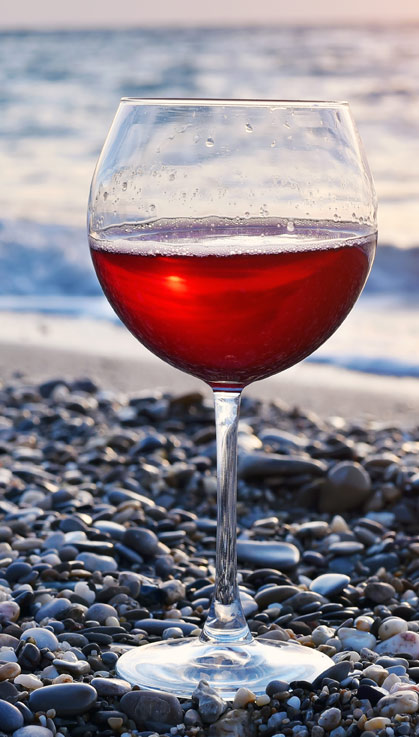 Beaujolais is a light red wine and is unique in that it is made with Gamay grapes. These wines boast a fresh, fruity yet mineral type taste. There are several varieties of Beaujolais, with the most popular being Beaujolais Nouveau, a wine fermented for just a few weeks before being released for sale each November. Typical notes of cherry, strawberry and raspberry are often found in Beaujolais wines.
Beaujolais is a light red wine and is unique in that it is made with Gamay grapes. These wines boast a fresh, fruity yet mineral type taste. There are several varieties of Beaujolais, with the most popular being Beaujolais Nouveau, a wine fermented for just a few weeks before being released for sale each November. Typical notes of cherry, strawberry and raspberry are often found in Beaujolais wines.
Here you can create the content that will be used within the module.

Code Name:
Just call me Shiraz
File Name: Not Petite
Primary Food Specialty: Barbecue
Secondary Food Specialty: Grilled or Roast Beef
Special Skills: Sneaky dark fruit punch like Batman hits your palate
Birthplace: Rhone Valley, France. California
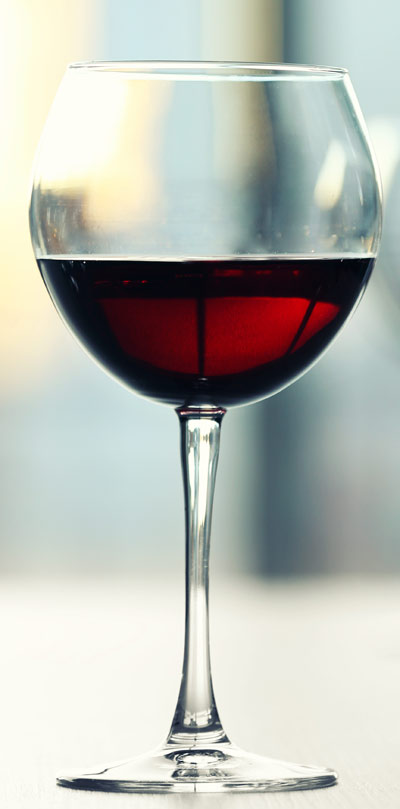 Syrah, also known as Shiraz, is a full bodied red wine. Made with dark fruit flavors, Syrah will fill your palate with exciting and always interesting flavors. From Blueberry to Black Olive, with possibly some licorice along the way, Syrah with initially punch you in the mouth with extreme flavor, while eventually tapering off with a peppery finish.
Syrah, also known as Shiraz, is a full bodied red wine. Made with dark fruit flavors, Syrah will fill your palate with exciting and always interesting flavors. From Blueberry to Black Olive, with possibly some licorice along the way, Syrah with initially punch you in the mouth with extreme flavor, while eventually tapering off with a peppery finish.
Shiraz has been widely used as a blending grape in popular red blends. It is thought best to age for decades but less aged wines tend to have very lively red and blueberry characteristics.
Aroma characteristics tend to be heavy with deep dark berries, black pepper, chocolate, and even hints of coffee.

Code Name: Drizzled Honey
File Name: Sweet Saturn
Primary Food Specialty: Blue Cheese
Secondary Food Specialty: Fruity Desserts
Special Skills: Is sweeter than your spouse ever has been
Birthplace: Bordeaux, France
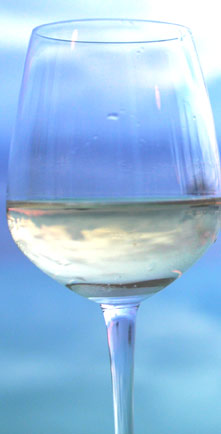 Sauternes is a French sweet wine made from Semillon, Sauvignon Blanc, and Muscadelle grapes. Extreme sweetness will hit your palate here, with notes of peaches, apricots, and lots of honey. Served slightly chilled, Sauternes is a great dessert wine perfect for any celebration.
Sauternes is a French sweet wine made from Semillon, Sauvignon Blanc, and Muscadelle grapes. Extreme sweetness will hit your palate here, with notes of peaches, apricots, and lots of honey. Served slightly chilled, Sauternes is a great dessert wine perfect for any celebration.

Code Name: French Sweetie
File Name: I’m going Blanc here
Primary Food Specialty: Seafood, specifically shellfish
Secondary Food Specialty: Pork, Veal, Chicken
Special Skills: So rich and oily in taste it will remind you of a politician
Birthplace: Bordeaux, France
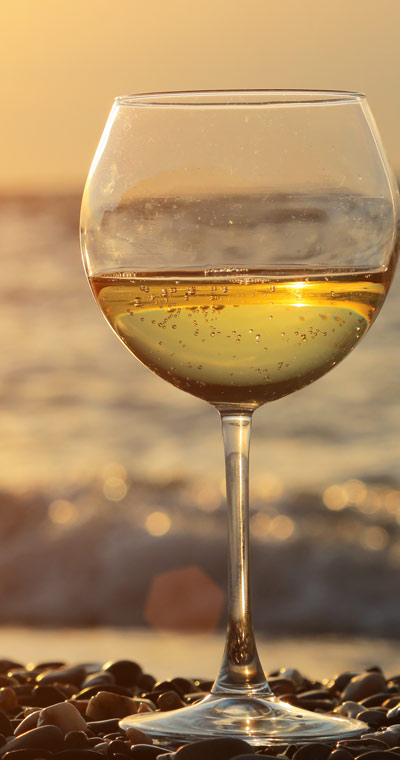 Semillon is a white sweet wine from the Bordeaux region of France, and is one of only 3 white wines approved in that region. Sweet in nature, Semillon has an oily texture, making it one of the more unique wines out there. Semillon grapes, although sweet, are often blended with Sauvignon Blanc to create a dry wine. Notes of Lemon will be proficient with Semillon wines.
Semillon is a white sweet wine from the Bordeaux region of France, and is one of only 3 white wines approved in that region. Sweet in nature, Semillon has an oily texture, making it one of the more unique wines out there. Semillon grapes, although sweet, are often blended with Sauvignon Blanc to create a dry wine. Notes of Lemon will be proficient with Semillon wines.

Code Name: The Don
File Name: An Offer You Can’t Refuse
Primary Food Specialty: BBQ Pork
Secondary Food Specialty: Mushrooms, Fried Chicken
Special Skills: Being bright bright bright
Birthplace: Australia, Argentina
Corvina is widely planted in Italy’s northeastern corner, making DOC, DOCG and IGT wines. In Valpolicella, Bardolino and Amarone wines, Corvina makes up the bulk but not the whole: 100-percent Corvina wines must be made under the regional IGT title. As with the famed Super Tuscans, top producers have not let this put them off making prestigious, concentrated wines, and many top Corvina-based wines are labeled IGT. In blends, Corvina’s high level of acidity and distinctive cherried, herbaceous flavors are essential to the character of the wine.

Code Name: Secret Pinot
Private Dancer
File Name: Not PInot
Primary Food Specialty: Anything beef or strong cheese
Secondary Food Specialty: Roast Chicken
Special Skills: Tarty banana impersonation
Birthplace: France.
Gamay is a grape that has been around since the 1300s, yet many wine drinkers are not familiar with the name. This is primarily because the most famous wine the grape produces is Beaujolais.
We like to think of Gamay as a wonderful little secret for anyone that loves Pinot Noir, but is seeking a more affordable alternative. Think of Gamay as the little brother that never received all the attention and accolades that his older sibling did. Even though the older sibling was never as consistent as the little brother, when the older sibling ever did anything well, it was like they could walk on water. This is the same relationship between Gamay and Pinot Noir.

Code Name: Whitey White
File Name: Whiter than White
Primary Food Specialty: Seafood
Secondary Food Specialty: Shrimp Pasta
Special Skills: Smelling like sweet nectar
Birthplace: Spain
Albariño wine (“alba-reen-yo”) is a high-quality, light-bodied white that grows mostly in Spain and Portugal. It’s loved for its high acidity, refreshing citrus flavors, dry taste, and subtle saltiness. For seafood lovers, Albariño is a fantastic choice for pairing with exquisite dishes like ceviche, fish tacos, seafood pasta, and shrimp.
It has a dramatic aromatic intensity as a result of the higher levels of two aromatic compound groups called terpenes and thiols. Expect aromas of lemons, limes, pear, grapefruit, honeysuckle, nectarine, and occasionally orange zest and beeswax, supported by subtle smells of freshly wetted granite and Thai basil when sniffing your glass. When you taste Albariño, you’ll instantly delight in its mouth-watering acidity, somewhat weighty mid-palate, saltiness, and long tingly finish that often has a subtle bitter note (almost like grapefruit pith).

Code Name: Not Albarino
File Name: No…the other one..the one with a V
Primary Food Specialty: Veal Piccata
Secondary Food Specialty: Chicken Salad
Special Skills: Being remarkably ok with sounding like someone else
Birthplace: Portugal
An old grape variety of exceptional quality, deservedly famed for the varietal wines it produces in the Vinho Verde region, specifically in the two sub-regions of Monção and Melgaço. Increasingly it is blended with Loureiro in most Vinho Verde white wines, Alvarinho has a highly characteristic floral and fruity profile with notes of lime tree, balm mint, honeysuckle, peach, grapefruit and apple, all well-married with the high acidity typical of crisp white wines from north-west Portugal. The grapes yield balanced wines with good structure and moderate alcohol levels. Alvarinho’s qualities are being “exported” to more southern wine regions such as the Setubal Peninsula and Estremadura.

Code Name: Dr. Pinot
File Name: Pinot Nana
Primary Food Specialty: Veal
Secondary Food Specialty: Roasted Turkey
Special Skills: Stripping Paint or at least smelling like it
Birthplace: South Africa
Pinotage is a grape variety that was created in South Africa in 1925 by Abraham Izak Perold, the first Professor of Viticulture at Stellenbosch University. Perold was attempting to combine the best qualities of the robust Hermitage with Pinot noir, a grape that makes great wine but can be difficult to grow. Perold planted the four seeds from his cross in the garden of his official residence at Welgevallen Experimental Farm and then apparently forgot about them. In 1927 he left the university to take up a job with KWV co-operative and the garden became overgrown. The university sent in a team to tidy it up, just as Charlie Niehaus happened to pass by. He was a young lecturer who knew about the seedlings, and rescued them from the clean-up team.

Code Name: Dark Champagne
File Name: Pinot Panther
Primary Food Specialty: Barbecue
Secondary Food Specialty: Grilled or Roast Beef
Special Skills: Sneaky dark fruit punch like Black Panther
Birthplace: France
Pinot Meunier is one of the most widely planted grapes in France but it is rather obscure to most wine drinkers and will rarely be seen on a wine label. The grape has been favored by vine growers in northern France due to its ability to bud and ripen more reliably than Pinot noir. The vine’s tendency to bud later in the growing season and ripen earlier makes it less susceptible to developing coulure which can greatly reduce a prospective crop. For the last couple of centuries, Pinot Meunier has been the most widely planted Champagne grape, accounting for more than 40% of the region’s entire plantings. It is most prevalent in the cooler, north facing vineyards of the Vallee de la Marne and in the Aisne department. It is also widely grown in the Aube region in vineyards where Pinot noir and Chardonnay would not fully ripen.

Code Name: Sting
File Name: Stings the Lip
Primary Food Specialty: Salmon with Capers
Secondary Food Specialty: Salted Fish
Special Skills: High Acid
Birthplace: France
Picpoul (also known as Piquepoul) is an ancient white-wine grape variety of the traditional and prolific Languedoc-Roussillon region in southern France. The name Pique-poul translates literally as “stings the lip”, and is a reference to the grape’s mouthwateringly high acidity.
Picpoul’s most famous incarnation is in the white wines of the Picpoul de Pinet AOC that bears its name. The variety’s ability to keep its acidity even in a hot, Mediterranean climate makes it the perfect choice for the region, making taut, full-bodied white wines with herbal and citrus aromas. Picpoul was traditionally blended with another obscure Languedoc variety, Clairette. Together, these two tangy grapes formed the basis of white Picardin, millions of liters of which were once shipped northwards to Paris each year along France’s impressive network of canals.

Code Name: Rose Petal
File Name: Firefighter
Primary Food Specialty: Roast Chicken
Secondary Food Specialty: Curry
Special Skills: Taming Spicy Food
Birthplace: South America
Torrontés (“torr-ron-tez”) is an aromatic white wine that originated in Argentina. Torrontés is an ideal wine to match with Asian and Indian cuisine due to its sweet floral aromas of rose petals and flavors of white peach and lemon zest. The wine smells sweet, but is usually made in a dry style and the best Torrontés wines come from the high elevation vineyards in Salta, Argentina. Find out more about this rare and special wine from South America.
Torrontés is similar to other aromatic white wines including Riesling and Muscat Blanc (Moscato). The major difference between Torrontés and these aforementioned white wines is that Torrontés is commonly made in a dry style. This makes it a very interesting wine to enjoy because its salty lean taste is in opposition to its sweet perfumed aromas.
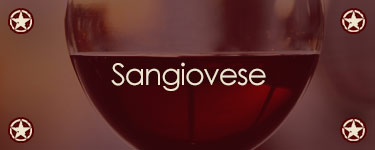
Code Name: The Chameleon
File Name: Changeling
Primary Food Specialty: Herbs and Tomato
Secondary Food Specialty: Pizza
Special Skills: Beer for people that like wine…or vice versa
Birthplace: Italy
The Sangiovese grape is a bit of a chameleon; easily altering its genetics to fit the environment. There are many different mutations of the variety all over Italy, which results in very different tasting wines. From the delicate floral strawberry aromas of Montefalco Rosso to the intensely dark and tannic wines of Brunello di Montalcino, Sangiovese wine has something for everyone.
Sangiovese is savory. Because of its ability to be a chameleon, Sangiovese wines offer a wide range of tastes from very earthy and rustic–as is the case with many Chianti Classico– to round and fruit-forward. Regardless of where it’s grown, it always exhibits cherry flavors with more subtle notes of tomato.

Code Name: Conan
File Name: I’ll be Back Barolo
Primary Food Specialty: Veal
Secondary Food Specialty: Lamb
Special Skills: Not being Barolo
Birthplace: Italy
Barbaresco is an Italian wine made with the Nebbiolo grape. Barbaresco is produced in the Piedmont region in an area of the Langhe immediately to the east of Alba and specifically in the comunes of Barbaresco, Treiso and Neive plus that area of the frazione San Rocco Seno d’Elvio which was once part of the comune of Barbaresco and now belongs to the comune of Alba.
DOCG regulations stipulate that Barbaresco wines must be aged for a minimum of 2 years (at least 9 months in oak) prior to release and aged for at least 4 years to be considered a riserva. The typical style of a Barbaresco has bouquets of roses or violets with flavor notes of cherry, truffles, fennel and licorice. As the wine ages, it can develop smoky notes and more earthy and animal flavors like leather and tar.

Code Name: Green With Envy
File Name: Pale Rider
Primary Food Specialty: Lime Chicken
Secondary Food Specialty: Fish Tacos
Special Skills: Being really fun to say
Birthplace: Spain
Verdejo (“Vurr-day-ho”) is an uncommon, light-bodied white wine that grows almost exclusively in Spain. The wine is an outstanding alternative to wines like Sauvignon Blanc and Pinot Grigio, with surprising changes in flavors coming with age. Find out more about Verdejo, where it grows, what it tastes like, and excellent food pairings.
Verdejo makes subtle-yet-stunning white wines with flavors of lime, Meyer lemon, grapefruit, grass, fennel, and citrus blossom. It’s often likened to Sauvignon Blanc but really, it deserves its own category. Unlike most whites, Verdejo continues to improve over several years of bottle-aging, where it gains a rich texture and flavors of toasted Marcona almonds, supported by sparkly acidity. The bitter flavors of grass and fennel come in on the finish and almost make the wine taste crunchy.

Code Name: Sprite
File Name: 7 Can’t get Up On This
Primary Food Specialty: Seafood, specifically shellfish
Secondary Food Specialty: Scallops
Special Skills: Making Seafood …seafoodier
Birthplace: Italy, Australia
Cortese is a white grape variety that is most famous for its role in the crisp, lime-scented wines of Gavi. The variety is known for its bracingly high acidity and its ability to retain freshness, even when grown in hot environments. Apple, peach and honeydew flavors are commonly associated with Cortese wine, with lime, almond and light herbal or grassy aromas.
Wines made from Cortese (particularly those from the DOCG Gavi) have long been favored by restaurants in the southern neighboring port of Genoa as a wine pairing with the local seafood caught off the Ligurian coast. The wine’s moderate acidity and light, crisp flavors pair well with the delicate flavors of some fish. Cortese wines tend to be medium bodied with notes of limes and greengage. In vintages that are particularly cool, the wines can be aggressively acidic and lean but winemaking techniques such as malolactic fermentation and oak barrel fermentation can temper that.

Code Name: Barb
File Name: Barberella
Primary Food Specialty: Dark Meats
Secondary Food Specialty: Pork Tenderloin
Special Skills: Being the wine of the people
Birthplace: Northern Italy
Barbera has long filled-in the low slopes and valleys of Northern Italy. It’s considered a lesser wine to Nebbiolo and, therefore, doesn’t earn the best grape-growing real estate (such as South-facing slopes on hills above the ‘nebbia’ or fog). Despite its lowly position, Barbera is the quintessential ‘wine of the people,’ it’s meant to be enjoyed young.
Somehow Barbera wine tastes both rich and light-bodied. Why is that? Well, one reason is that it has dark staining pigments that dye the wine to near-black. However, the taste of Barbera has notes of strawberry and sour cherry: flavors synonymous with light-bodied wines. Light tannin and high acidity make it taste ‘Juicy’.

Code Name: Rollo
File Name: Rolling in the Deep
Primary Food Specialty: Barbecue
Secondary Food Specialty: Grilled or Roast Beef
Special Skills: Being really velvety and fun to say
Birthplace: Rhone Valley, France. California
Barolo is a red wine produced in the Piedmont region of Italy. The wines are made from Nebbiolo, a small, thin skinned red grape varietal generally high in acid and tannins. In Piedmont, Nebbiolo is one of the first varietals to undergo budbreak and last to be picked, with harvest generally taking place in late October. Barolo wines must be solely composed of Nebbiolo, no exceptions.
The wines are rich and full-bodied, with a strong presence of acidity and tannins. Barolos are often compared to the great Pinot Noirs of Burgundy, due to their light brick-garnet pigments and bright acidity – plus the region it’s made has a lot that is aesthetically common to Burgundy too, but we’ll get to that later. Rose flower, tar, and dried herbs are aromas frequently associated with Barolo wines.

Code Name: Almost Tropical
File Name: Malvificent
Primary Food Specialty: Shrimp Salad
Secondary Food Specialty: Chicken Curry
Special Skills: Being Rustic and Fancy in the same pants
Birthplace: Spain
Malvar is a Spanish grape variety used in the production of medium-bodied white wines. Indigenous to the Madrid region, Malvar is considered a regional specialty but remains relatively unknown, even in Spain. The majority of Malvar is grown at high altitudes (up to 2000ft/610m) to ensure that the variety retains its intensity and has enough acidity to keep it fresh.
Once vinified, Malvar displays a range of tropical aromas and flavors, but it can also take on more rustic characteristics. It requires a fairly long growing season, which is not a problem in Spain, but it is still not widely cultivated. Interest in Malvar appears to be increasing and it is likely that, as Madrid’s winegrowing reputation improves, more of this variety will turn up in export markets.
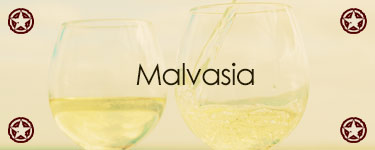
Code Name: Maybe Muscat
File Name: Malvasia Blanca
Primary Food Specialty: Veggies and Fruit
Secondary Food Specialty: Fried Chicken
Special Skills: Being good with anything you would normally want a light beer with
Birthplace: Italy , California
Malvasia Bianca vines are of medium-to-high productivity and produce yellow-brown grapes with low-to-medium acidity. When vinified dry, the resulting wine can be very clean and crisp, though yields must be restricted to retain flavor concentration. Made in sweeter, or off-dry styles, Malvasia Bianca shows ripe pear flavors backed by honey notes and a touch of spice.
In Sicily, Sardinia and the Aeolian Islands, Malvasia Bianca is commonly produced in the semi-dried passito style. This is an involved procedure that intensifies the flavors of the grapes and changes the wine’s color to more amber and golden tones.

Code Name: Berry Good
File Name: Groovy Red Groovy
Primary Food Specialty: Prime Rib
Secondary Food Specialty: Rack of Lamb
Special Skills: Explodes fruit in your mouth like a bag of wine skittles.
Birthplace: Spain, France
Grenache, or as it’s known by its Spanish name, Garnacha, is one of the most widely planted red grapes in the world; it’s also one of the key ingredients in some of the world’s most famous wines.
Grenache is known for its berry flavors of bright strawberries and raspberries and notes of white pepper, with many people even saying that the wine has the unmistakable flavor of a lazy bag of skittles.
It’s a fantastic wine for classic fall and winter dishes like roasted vegetables, prime rib, rack of lamb and Beef Bourguignon.

Code Name: Itsa Mario
File Name: Pizza the Hut
Primary Food Specialty: Pizza
Secondary Food Specialty: Meat Lasagna
Special Skills: Pizza Friendly
Birthplace: Italy
Montepulciano is the 2nd most planted red grape in Italy (after Sangiovese) and has had a reputation for low-priced juicy “pizza-friendly” red wines. Fortunately, there are several producers in Abruzzo that have shown the amazing potential of this grape by producing inky, black-fruit driven, chocolatey wines best enjoyed after 4 or more years of aging.
Montepulciano will cut through some of the meatiest meats (like beef brisket) and pair nicely alongside rich, roasted winter vegetables. If you learn only one tip about pairing with Montepulciano, it is to match it with something with substance (fat).

Code Name: Scrabble Breaker
File Name: V Own Yay
Primary Food Specialty: Roasted Chicken
Secondary Food Specialty: Curry, and Roast Turkey
Special Skills: Being almost Chardonnay but not
Birthplace: Bordeaux, France
Viognier (“Vee-own-yay”) is a full-bodied white wine that originated in southern France. Most loved for its perfumed aromas of peach, tangerine and honeysuckle, Viognier can also be oak-aged to add a rich creamy taste with hints of vanilla.
Viognier is for those who love to stop and smell the flowers. Viognier ranges in taste from lighter flavors of tangerine, mango and honeysuckle to creamier aromas of vanilla with spices of nutmeg and clove. Depending on the producer and how it’s made, it will range in intensity from light and spritzy with a touch of bitterness to bold and creamy. If you like Chardonnay you’ll like the weight of Viognier and notice it’s often a little softer on acidity, a bit lighter and also more perfumed.

Code Name: French Sweetie
File Name: Figgy
Primary Food Specialty: Herb Crusted Fish
Secondary Food Specialty: Sushi
Special Skills: Gettin Figgy With It
Birthplace: Hungary, Germany
Furmint is the key grape variety associated with Hungary’s most famous vinous export: Tokaji. The variety’s biting acidity gives wines legendary longevity and, when blended with Harslevelu and Muscat Blanc a Petits Grains, Furmint can produce some of the most complex and longest-living wines in the world.
The wines are very rich in extract and have good body. The relatively high acidity and alcohol content support the longevity of the wines. A honey tone is characteristic. Furmint delivers good quality especially in high Prädikat-level wines.

Code Name: Newbie
File Name: Winter Soldier
Primary Food Specialty: Rack of Lamb
Secondary Food Specialty: Duck
Special Skills: Being a ghostly blanket of grape
Birthplace: Italy
Nebbiolo is the grape variety behind the top-quality red wines of Piedmont, northwestern Italy, the most notable of which are Barolo and Barbaresco. Nebbiolo wines are distinguished by their strong tannins, high acidity and distinctive scent – often described as “tar and roses”. A less obvious characteristic, visible only over time, is their tendency to lose color. Within just a few years of vintage, most Nebbiolo wines begin fading from deep, violet-tinged ruby to a beautiful brick orange.
Strong flavors striking flavors of cherry, coffee, anise, and primordial earth.With such a large amount of tannin, you’ll want to pair these wines with foods that feature fat, butter, and olive oil, and nothing too lean. Your first thought will probably be rustic, Italian fare, and that’s a great place to start! Nebbiolo also goes surprisingly well with savory Chinese dishes and spice-driven Asian cuisine.

Code Name: Big Papa
File Name: Pepper Franc
Primary Food Specialty: Roasted Pork
Secondary Food Specialty: Hamburgers
Special Skills: Making Hamburgers Fancy
Birthplace: France
Cabernet Franc (“Cab-err-nay fronk”) is medium-bodied red wine whose origins likely lie in the Basque country of France. The wine is loved for its savory, bell pepper-like flavors, medium-high acidity and mouthwatering taste. It is an ideal food pairing wine. You can find single-varietal Cabernet Franc wines, but the variety is also quite popular as blending grape in the famous Bordeaux Blend.
Medium-bodied wines like Cabernet Franc can pair with a wide variety of foods due to their natural high acidity and slightly reduced tannin (the astringent quality in red wine). Higher acidity makes it possible to pair with tomato-based dishes, vinegar-based sauces (smoky BBQ anyone?) or rich veggies like black beluga lentils.
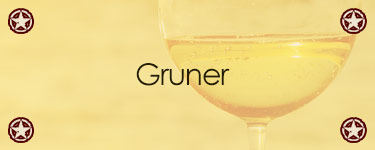
Code Name: Veltliner
File Name: Green Wine of Vetlin
Primary Food Specialty: Wiener Schnitzel
Secondary Food Specialty: Veal
Special Skills: Being dryer than a Wes Anderson movie
Birthplace: Austria, Germany
Grüner has many strong flavors among them are lime, lemon and grapefruit. There is also a green and herbaceous flavor that is often described as white pepper. However, what makes Grüner Veltliner wine so unique is its signature vein of acidity that explodes in your mouth like pop rocks. More affordable Grüner Veltliner (around the $10-20 mark) loses this acid burst quickly after every sip, but high quality Grüner wine will have a delicate tingly aftertaste.
Grüner Veltliner has a reputation of being a particularly food-friendly wine and is a popular offering on restaurant wine lists. It is made into wines of many different styles – much is intended for drinking young in the Heuriger (bars serving new wine) of Vienna, a little is made into sparkling wine, but some is capable of long aging. The steep, Donau-like vineyards of the Danube west of Vienna produce very pure, mineral Grüner Veltliners intended for laying down. Down in the plains, citrus and peach flavors are more apparent, with spicy notes of pepper and sometimes tobacco.

Code Name: Cinderella
File Name: Scott Beo
Primary Food Specialty: Seafood, specifically shellfish
Secondary Food Specialty: Pork, Veal, Chicken
Special Skills: The only thing good involving a “Beo” since happy days
Birthplace: Spain
Macabeo (or Viura in Rioja) is a white wine grape used on either side of the Pyrenees, in the north and east of Spain and the southernmost reaches of France. A relatively versatile grape, it is used in still, sparkling, dry and sweet wines. There are few universal truths about how Macabeo tastes; the wines can be fresh, floral and aromatic when harvested sufficiently early and aged in stainless steel, but weighty, honeyed and nutty when aged in oak and harvested slightly later.
The most popular light-skinned grape of northen Spain. High in production, the Macabeo takes well to hot and dry regions. It also buds late which makes it less likely to be harmed by frost. Together with the varietals Parellada and Xarel-lo it is used in the production of the sparkling Spanish wine Cava. Wines from the Macabeo are dry, medium in acidity, and have notes of delicate wildflowers and bitter almonds. Macabeo is best consumed young.

Code Name: Carmen San Diego
File Name: Maybe Merlot
Primary Food Specialty: Lamb Curry
Secondary Food Specialty: Barbecue
Special Skills: Explodes fruit in your mouth like a bag of wine skittles.
Birthplace: Chile
Carménère is a dark-skinned grape variety originally from the vineyards of Bordeaux, and which has found a particularly suitable home in Chile. Its name is often spelt Carmenère (including in the latter country), and without accents by some.
A late-ripening variety, Carménère needs high levels of sunshine and a warm summer to reach its full potential, but in the right environment it can produce fine, deeply colored red wines, with the attractive meaty plumpness of Merlot and the gently herbaceous, cedary notes of Cabernet Sauvignon.

Code Name: Garnacha
File Name: Nacho Grenacha
Primary Food Specialty: Prime Rib
Secondary Food Specialty: Beef Bourguignon
Special Skills: The ability to be smooth but sound like a boxer
Birthplace: Spain
The Garnacha grape was born in the northern region of Spain known as Aragon. There, the grape began to be cultivated and was originally used for both single varietal wines as well as for blending.
Due to Aragon’s location on the border of France, Garnacha traveled over the Pyrenees mountains and found another home in the Languedoc-Roussillon region of Southern France. As a result of the language difference, the French called the grape Grenache (its more widely known name today) and from the Languedoc, the grape traveled to the Southern Rhone where it became famous.

Code Name: Carlos
File Name: Carlos Men Thee Ah
Primary Food Specialty: Pepper Steak
Secondary Food Specialty:Wild Game, Pizza
Special Skills: Is so tasty it doesn’t need to steal jokes.
Birthplace: Portugal
Mencía contains high levels of a sub-group of aroma compounds called terpenoids which translate into lovely flowery aromas, strawberry, raspberry, black licorice, pomegranate and cherry sauce. On the palate you’ll be greeted with peppery flavors of sour cherry, red currant and pomegranate along with a bitter cherry pit flavor which comes from the wine’s tannin. In the regions where it grows in Spain and Portugal, you will taste a subtle crushed gravel or granite-like minerality in the texture, which often contributes to its black peppery taste.

Code Name: Fruit Driver
File Name: Mataro
Primary Food Specialty: Stew
Secondary Food Specialty: Veal
Special Skills: Being driven by fruit without being fruity.
Birthplace:Spain, France. California
Mourvedre (Monastrell in its native Spain, Mataro in Australia and California) is a black-skinned variety that has been grown in vineyards all around the western Mediterranean for centuries. Thought to have originated in Spain, it is now grown extensively throughout the Iberian Peninsula, southern France, California and South Australia.
Mourvedre’s meaty, herby aromas are very distinctive, as are its strong tannins. These qualities make it a potent ingredient for blending.

Code Name: Nero
File Name: Calabrese
Primary Food Specialty: Barbecued Pork
Secondary Food Specialty: Rump Roast
Special Skills: Sneaky dark fruit punch like Batman hits your palate
Birthplace: Italy
Nero d’Avola (also known as Calabrese) is the most important and widely planted red wine grape variety in Sicily. The area was a hotbed of trade and population movement during the Middle Ages and Nero d’Avola was frequently used to add color and body to lesser wines in mainland Italy.
With its bold fruit flavors, robust tannin and acidity, Nero d’Avola is a great wine to match with rich meaty meats. Some classic pairings include oxtail soup and beef stew, but you could easily swap BBQ burgers with bacon.
Sign Up to be a Tasting Partner!
Enter your email below and you will be the first to know about new wines, recipes, wine articles, and new additions to the Vastewine app.


